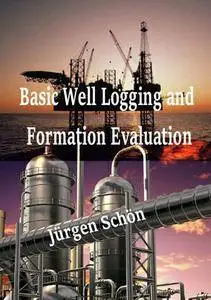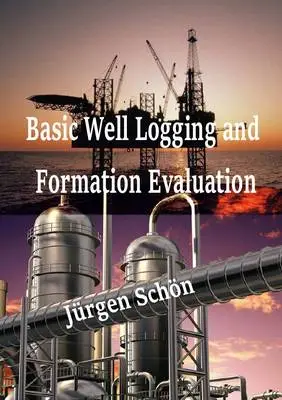"Basic Well Logging and Formation Evaluation" by Jürgen Schön
BoBoCoAvE | 2015 | ISBN: 8740309797 9788740309799 | 179 pages | PDF | 13 MB
BoBoCoAvE | 2015 | ISBN: 8740309797 9788740309799 | 179 pages | PDF | 13 MB
Subject are the fundamental techniques of well logging/borehole geophysics and the interpretation of measured data (formation evaluation). Examples with an exercise part (sandstone reservoir, shaly sand interpretation, complex mineralogy of a carbonate reservoir) help to understand the different methods and algorithms.
The user will learn
• reservoir properties (porosity, saturation, fluids, permeability, capillary pressure),
• the physical background of well logging methods and the response with respect to reservoir characterization (physical principle, primary information from logs),
• rules for optimal log combinations, basic equations and models, fundamental techniques of log interpretation.
Contents
1. Introduction
1.1. History, present and future of a science and technology
1.2. Fundamental problems and the way we go
2. Reservoir Rocks, Reservoir Properties
2.1. Reservoir rock types
2.2. Porosity
2.3. Fluids in the pore space: Saturation and bulk volume fluid
2.4. Permeability
2.5. Core analysis
2.6. Summary
3. Well Logging – Overview
3.1. Introduction
3.2. Principle of log measurement
3.3. Logging methods – Classification
3.4. The tool (probe) and the environment of measurement
4. Well Logging – The Methods
4.1. Borehole geometry
4.2. Electrical and electromagnetic logs
4.3. Nuclear logs
4.4. Acousticlog, Sonic log
4.5. NMR measurements
4.6. Imaging Techniques
5. Log Interpretation – Introduction
5.1. Overview
5.2. Quick-Look methods
5.3. Quantitative Interpretation: Shale Content
5.4. Quantitative Interpretation: Porosity from a single log
5.5. Porosity and Mineral Composition – Multiple Porosity Methods
5.6. Water Saturation from logs
6. Some Applications in Water Exploration
6.1. Water well in an unconsolidated formation
6.2. Mineral water well in a fractured carbonate formation
7. Examples and Exercises
7.1. Oil-bearing Sandstone
7.2. Shaly sand profile
7.3. Mixed lithology Carbonate rock
8. Appendix
8.1. Physical properties of rock-forming minerals
8.2. Some conversions
9. Recommended books and sources
10. References
11. Index



